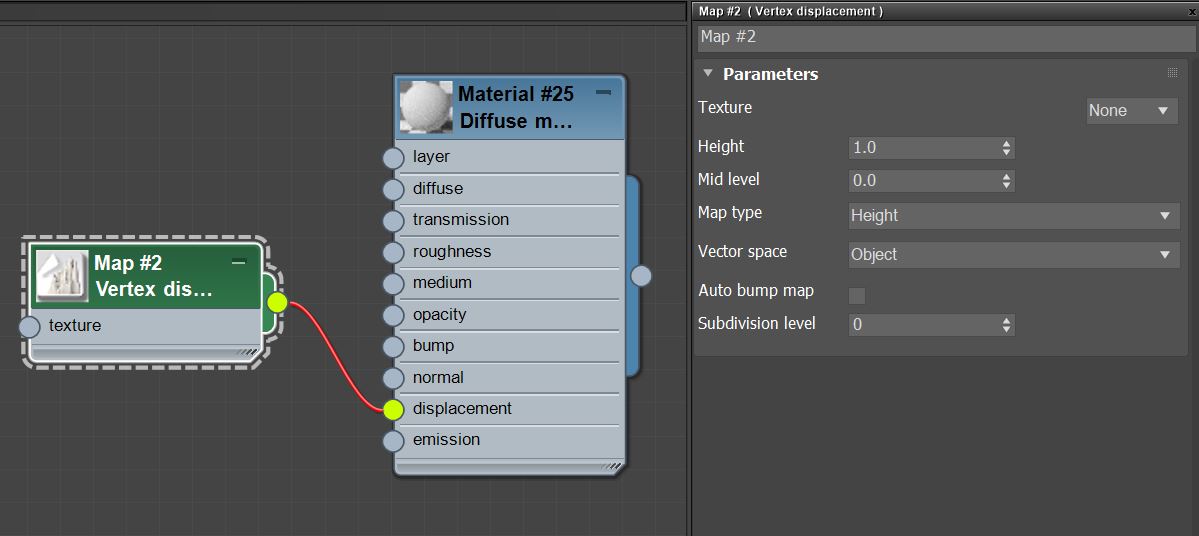Vertex Displacement
Vertex Displacement is a more robust displacement system that does not suffer from the same limitations as Texture Displacement. It works with all textures and projections, including procedurals, OSL textures, and images. Vertex displacement maps can be mixed by using the Displacement Vertex Mixer node.
|
|
Vertex Displacement
|
Figure 1: A Vertex Displacement node connected to the Displacement input on a Diffuse material
Vertex Displacement Parameters
Texture - All Texture types are supported, including Images, Procedurals, and OSL textures.
Height - The displacement height in meters.
Mid Level - The image value that corresponds to no displacement. The range is always normalized to [0,1]. Set this value to 0.5 for Image textures that use 50% to represent no displacement.
Map Type - Choose between Height maps and Vector Displacement maps.
Vector Space - Valid when Map Type is set to Vector Displacement.
Auto Bump Map - Generates an Automatic bump map to achieve fine details without requiring high subdivision levels. Only supports Height displacement maps.
Subdivision Level - This refers to the subdivision level applied to Polygons using this Material. It overrides the subdivision level set in Geometry preferences. Higher values achieve greater displacement detail, but can also increase rendering and pre-processing times.
Compatibility Mode - The Octane version that the behavior of this node should match, the default is Latest (2023.1). The 2022.1 compatibility mode provides legacy behavior for world space projection affecting auto bump map textures.

